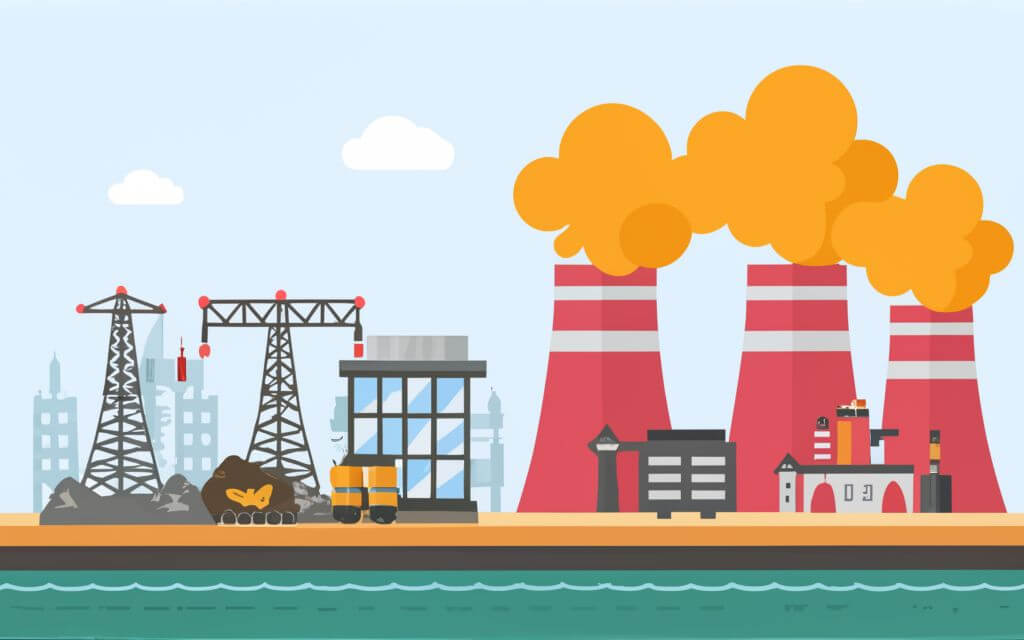Non-renewable energy sources are essential for powering the modern world, but their use raises concerns due to their limited availability and negative environmental impact. This essay will explore various non-renewable energy sources, highlighting their features, benefits, and drawbacks. Related: Renewable Energy

- Coal: Coal is one of the oldest and most frequently used non-renewable energy sources that has fueled industries and electricity generation for centuries. However, the use of coal has its downsides, as it releases a massive amount of carbon dioxide, which contributes to climate change. Moreover, coal mining operations can lead to environmental degradation and health issues for nearby communities.
- Oil (Petroleum): Petroleum is a highly adaptable, non-renewable energy source essential for transportation, heating, and various industries. It is obtained from fossilized organic matter, but its extraction can have adverse environmental effects, such as oil spills. The combustion of petroleum releases greenhouse gases, which contribute to climate change. Additionally, the geopolitical consequences of oil dependence highlight the importance of seeking sustainable alternatives.
- Natural Gas: Natural gas contains methane and is a cleaner-burning option than coal and oil. However, the process used to extract it, mainly through hydraulic fracturing or “fracking,” can cause environmental issues such as water pollution and habitat disruption. Even though natural gas is considered a transitional fuel, its limited availability requires a closer look into its sustainability.
- Nuclear Energy: Nuclear power is a technology that uses nuclear fission reactions to generate electricity. It is a highly efficient and concentrated energy source that produces low greenhouse gas emissions. However, it comes with certain risks, such as accidents, challenges related to the disposal of radioactive waste, and concerns over nuclear weapons proliferation. Balancing the need for energy with the imperative of safety remains a significant challenge for the nuclear industry.
Conclusion:
Non-renewable energy sources have played a fundamental role in shaping the contemporary world, but their negative impacts are becoming increasingly apparent. From the degradation of the environment to the rise in global temperatures and the geopolitical tensions associated with our dependence on fossil fuels, we need to transition towards sustainable, renewable alternatives. As we navigate this transition, we must recognize the limitations of non-renewable energy sources and work collectively towards a greener, more sustainable, and resilient energy future.
FAQs:
What are the 7 main sources of non-renewable energy?
Non-renewable energy sources are finite and cannot replenish quickly on a human timescale. The seven primary sources of non-renewable energy are:
- Coal: Coal is a fossil fuel formed from the remains of plants that lived and died millions of years ago. It is one of the most widely used energy sources for electricity generation.
- Oil (Petroleum): Crude oil, extracted from underground reservoirs, is a primary source for various products such as gasoline, diesel, and heating oil. It is a significant energy source for transportation and industrial processes.
- Natural Gas: Composed mainly of methane, natural gas is another fossil fuel used for heating, electricity generation, and as a fuel for vehicles. It is often found in conjunction with oil deposits.
- Nuclear Energy: While not a fossil fuel, nuclear energy is considered non-renewable as it relies on uranium extraction and other radioactive materials. Nuclear power plants use controlled atomic reactions to generate heat, converted into electricity.
- Uranium: This radioactive element is used as fuel in nuclear reactors to produce nuclear energy. Uranium is a finite resource and is considered non-renewable.
- Propane: Propane is a byproduct of natural gas processing and crude oil refining. It is commonly used as a fuel for heating, cooking, and transportation.
- Tar Sands (Bitumen): Tar sands, or oil sands, contain a heavy, dense form of crude oil called bitumen. Extracting and processing bitumen into usable oil requires significant energy and has environmental impacts.